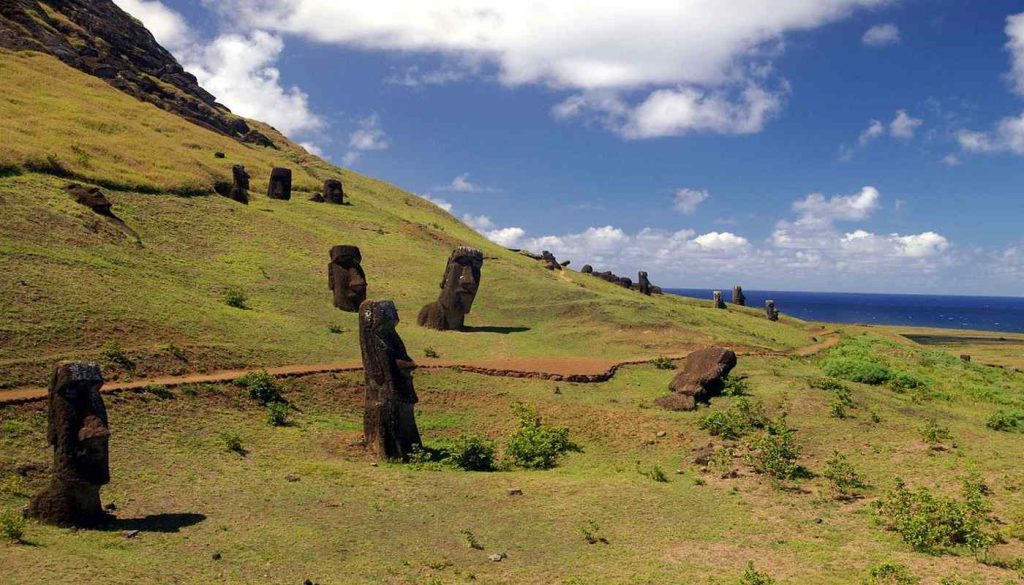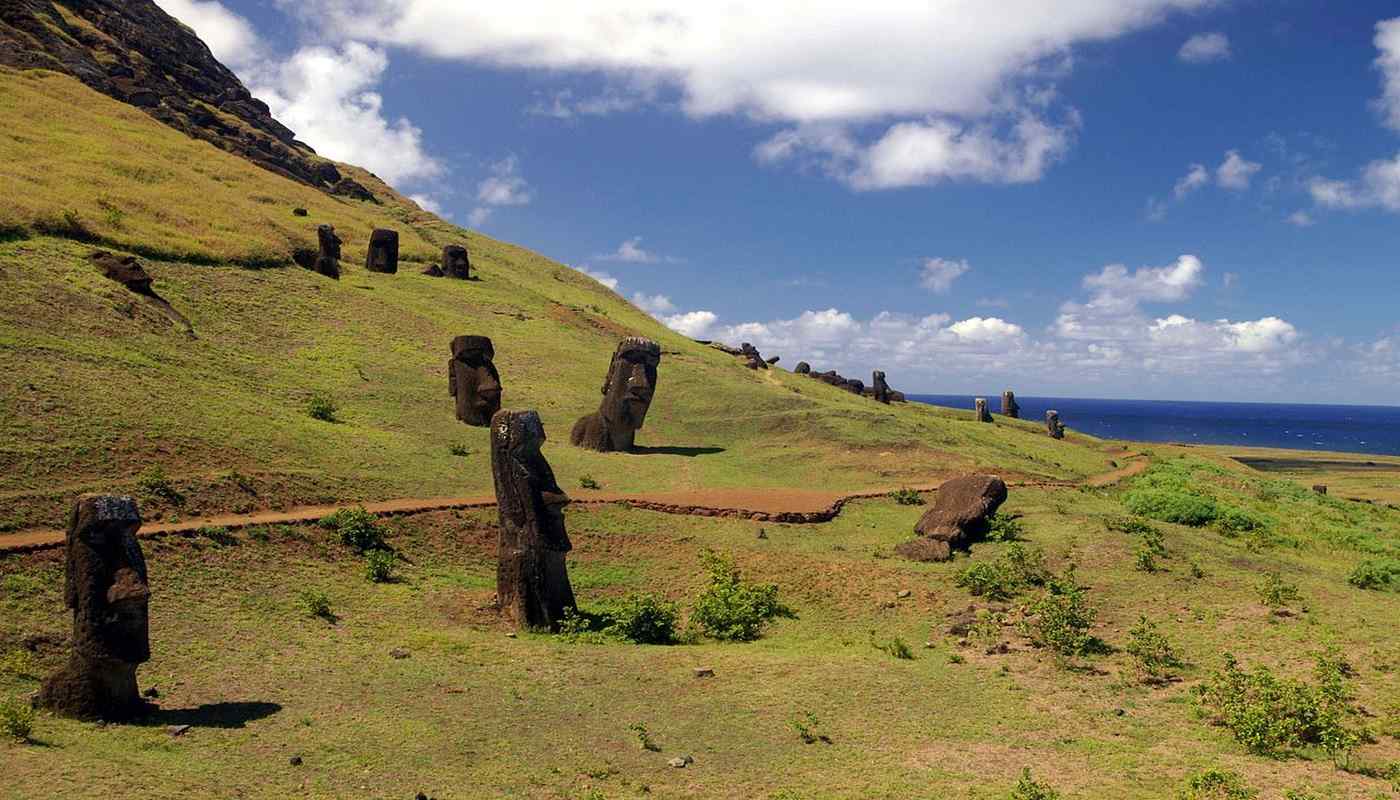
Our history books are littered with stories that present as lessons and warnings to future generations, and for years Rapa Nui, or Easter Island, was one such warning.
Famous for its giant stone heads, or moai, the island is also infamous for the rapid depopulation of their builders, which for years has been believed to be a devastating population collapse resulting from ecocide, or lethal exploitation of the natural environment.
Now though, a genetic study published in Nature debunks this long-standing theory. The study was carried out by an international team of scientists led by faculty at the Univ. of Copenhagen.
“Our genetic analysis shows a stably growing population from the 13th century through to the European contact in the 18th century. This stability is critical because it directly contradicts the idea of a dramatic pre-contact population collapse,” said first author Víctor Moreno-Mayar, Assistant Professor of Geogenetics at Copenhagen.
In case of a population collapse, the researchers would have been able to observe a less diverse gene pool in their analysis, simply due to there being a smaller population. However, when the team analyzed the genomes of 15 Rapanui (the name for those living on the island) who lived between 1670 and 1950, they found no signal of such collapse.
Today, a few thousand indigenous people live on the island. But the previous theory held that before the Europeans came to the island in 1722, the population was much larger. The “collapse” theory claims that the inhabitants of Rapa Nui depleted their natural resources to build the moai.
This is particularly relevant with trees, which were proposed as being cut down for firewood and to make rollers to move the moai around, eventually leading to a demographic and social collapse marked by famine, violence, and even cannibalism.
Through their genetic analysis, the team of scientists has not only provided evidence against the collapse theory, but also emphasized the stability of the Rapanui society over several centuries until the disruptions caused by European contact in 1722. The “collapse” theory has been called into doubt by previous studies based on archaeological data and population dynamics arguments. This is the first time, however, that genetics has been used to tackle this question.
The researchers now believe the Rapanui people adapted to environmental challenges that indeed occurred on the island between the 13th and the 18th centuries, which undermines theories suggesting resource mismanagement led to the societal collapse in the 16th or 17th century.
“The Rapa Nui landscape changed between the peopling of the island, which is around the 1200s, and the European contact 500 years later. However, the population stability throughout this time shows they were a resilient population capable of adapting to environmental challenges,” says Bárbara Sousa da Mota, a researcher at the University of Lausanne and co-first author of the study.
Moreno-Mayer perhaps puts it best.
“Personally, I believe the idea of the ecological suicide is put together as part of a colonial narrative,” he said. “That is this idea that these supposedly primitive people could not manage their culture or resources, and that almost destroyed their people. But the genetic evidence shows the opposite.”
For those fascinated by these early oceanographers, you’ll want to stay and read the next finding, which is that in addition to challenging the “collapse” theory, the new study also found evidence that Rapa Nui was unlikely to be the last stop in Pacific voyaging.
CHECK OUT: Say Hello to ‘Home Reef Island’ – Newly Made Last Week by a Volcano
Although 2,100 miles of ocean separate Rapa Nui and South America, the genetic analysis also showed that the Rapanui people were in contact with Indigenous Americans before Europeans arrived on the island.
The team found that approximately ten percent of the Rapanui gene pool has an Indigenous American origin. But more importantly, they were able to infer both populations met before Europeans arrived on the island and in the Americas.
YOU MAY ALSO LIKE: Kava Plant Used for Centuries in Traditional Medicine Now Studied for PTSD Treatment
“We looked into how the Indigenous American DNA was distributed across the Polynesian genetic background of the Rapanui. This distribution is consistent with a contact occurring between the 13th and the 15th centuries,” says Moreno-Mayar.
“While our study cannot tell us where the Rapanui came into contact with Indigenous Americans, this might mean that the Rapanui ancestors reached the Americas before Christopher Columbus,” adds Anna-Sapfo Malaspinas, also from Lausanne, and co-author on the paper.
OTHER NEWS FROM THE REGION: Archaeologists Uncover Ancient City in Kingdom of Tonga That Rewrites History: ‘First City of the Pacific’
This result settles a longstanding debate on whether there was any pre-European interaction between Polynesians and Indigenous Americans. And having peopled all of Polynesia across the Pacific, is it really that surprising they were able to arrive in South America?
“Not only is there no evidence of a population collapse before the Europeans arrived on the island, but the data also shows that they were capable of even more formidable voyages across the Pacific than had been previously established, ultimately reaching the Americas,” said Moreno-Mayar. “So we can put those ideas to rest now.”
SHARE This Truly Landmark Paper In The Study Of This Fascinating Island…




















